Lenovo's history: how ten Chinese scientists have created a leader in the PC market
By 2003, the Legend Group sold millions of computers and laptops under its own brand and decided to enter the world market. The name had to be changed to Lenovo, because Legend is such a banal name that people would have to spend too much time searching for computers under this brand. Thus began the history of this company outside of its native China. Lenovo now leads the PC market, is one of the largest manufacturers of mobile devices, builds supercomputers, embeds projectors in tablets and experiments with augmented reality.
In 1984, a group of ten Chinese scientists founded New Technology Developer Incorporated for the money of the Chinese Academy of Sciences. The purpose of the organization was the supply of computer equipment to China, as well as the implementation on the market of developments of the Academy. The company's first product was a circuit board, which allowed IBM-compatible computers to work with Chinese characters.
At the very beginning there was an attempt to import TV sets into China, but the plan failed. In 1989, the company, already renamed Legend Group, released the first personal computer under its name - Legend Q286. In 1993, the company released the first personal computer in China based on the 586th Pentium processor, and in 1996, the first laptop. By 1998, Legend sold its millionth computer.
')
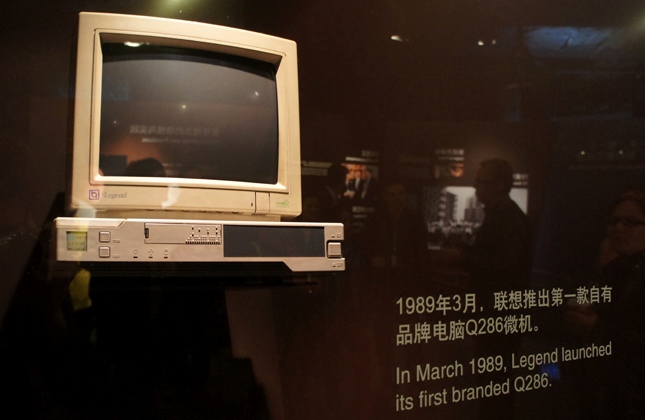
In 2002, the Legend DeepComp 1800 supercomputer with a capacity of 1000 Gflop / s in ranked 43rd on the list of the fastest computers. It was the first supercomputer from the company and the most powerful of the Chinese on the Top 500 list at that time. It was equipped with 526 Intel Xeon processors, 272 gigabytes of RAM and 6 terabytes of hard drives. DeepComp 1800 was installed at the Institute of Mathematics and Systems Research of the Chinese Academy of Sciences in Beijing.
As of November 2015, Lenovo, which has swallowed IBM x86 server business, ranks 25 lines in the Top-500 supercomputers. The company is part of the Gartner Magic Quadrant of integrated system manufacturers.

For expansion to the international market, Lenovo decided to find a ready-made brand, to which future buyers will have respect and trust. They became a ThinkPad.
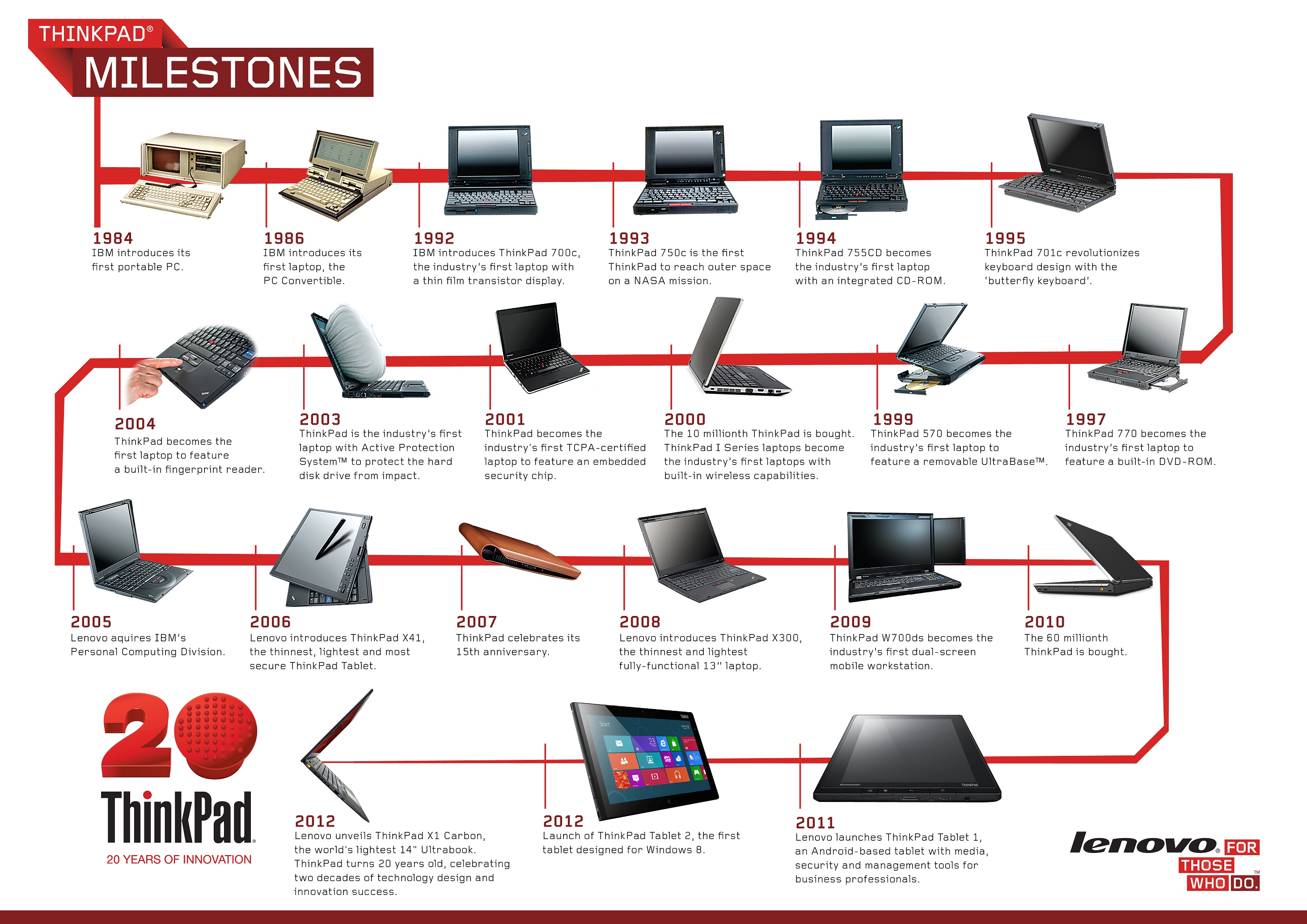
In 1992, IBM released the first ThinkPad notebook. Model 300 had 4 megabytes of RAM with the ability to increase to 8 megabytes, a hard disk of 80 megabytes and a 9.5-inch display with a resolution of 640x480 pixels. And there was no red trackpoint in it - it appeared on the 700C model that same year. The 700C already had up to 16 megabytes of RAM and a 120 MB hard drive.
The following year, the IBM ThinkPad 750C went into space through the purchase of NASA.


In 1995, the first transformer ThinkPad. The IBM ThinkPad 701 had a butterfly keyboard - it unfolded when the laptop was opened.
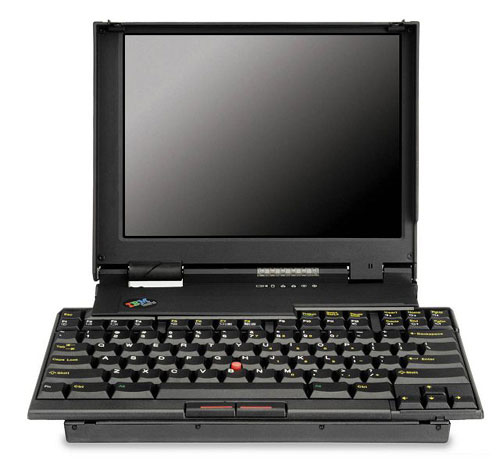
The transformation baton was picked up by the ThinkPad 570 in 1999. This laptop has got a docking station with a CD-drive. It ran on an Intel Pentium II MMX 366Mhz processor, ranged from 32 to 192 megabytes of RAM, a 6.4 gigabyte hard drive, and weighed 1.83 kilograms. The device screen is a 13.3-inch TFT with a resolution of 1024x768.

In 2004, IBM and Lenovo began working on a collaboration agreement. In 2005, Lenovo completed the acquisition of IBM's PC manufacturing division and became a new player in the international IT market and the third largest PC manufacturing company in the world. The cost of the transaction amounted to 1.25 billion dollars, and according to its conditions, Lenovo could continue to use the IBM brand until 2010, and then release products only under its own brand.
By 2012, Lenovo won the first place in the supply of personal computers through the purchase of computer business by IBM and the German company Medion.
Lenovo continues the tradition of developing transformers in Yoga models. In 2006, the company released the IBM Lenovo ThinkPad X41 with a touch screen and the ability to turn into a tablet.

The Lenovo ThinkPad notebook line is distinguished by its red trackpoint, angular body and reliability. This line is often chosen by corporate customers - from NASA to stores, warehouses and factories. The trackpoint in the middle of the keyboard turned out to be so convenient that the company even produces separate “à la Thinkpad” keyboards .
Lenovo launches models at the intersection of ThinkPad and Yoga. For example, Yoga ThinkPad 260 - I described the experimental silver model in a report from IFA 2015. ThinkPad Yoga laptops are made in the style of a ThinkPad, so their screen rotates 360 degrees, turning the device into a tablet.

Some people think that the ThinkPad is no longer a cake. Lenovo has made a number of changes that affect the design and keyboard. New laptops, for example, have a small island keyboard instead of the seven-line classic, have no ThinkLight backlight. Some users do not like the materials.
To correct this opinion, the vice-president of the company decided to make a “retro-ThinkPad”, which we discussed . Your opinion reached the company itself, but so far the results of this work have not shown us. We will wait and hope for the revival of the classic device.
Transformer laptops have existed for a long time, but Lenovo has made this form factor especially popular thanks to the Yoga line. Now touchscreen laptops are produced by many major manufacturers.
In 2012, the company released Yoga 11 - a transformer on the Nvidia Tegra 3 1.3, with 2 GB of RAM and 32 or 64 GB SSD. More like the characteristics of a smartphone, right? The downside of the gadget was Windows RT, but this flaw was corrected in the following models.

A great tool for the job I still think is the Yoga 11S released in 2013 on Windows 8 Pro, built on the basis of Intel Core i7 1500 MHz and having 8 GB of RAM and SSD up to 256 GB. The display is 11.6 inches with HD resolution at the same time more than a regular tablet, and less than a large laptop - the gadget is convenient for traveling and working on the go, for example, for writing articles from events. But there is also a minus - for the tablet gadget is heavy.
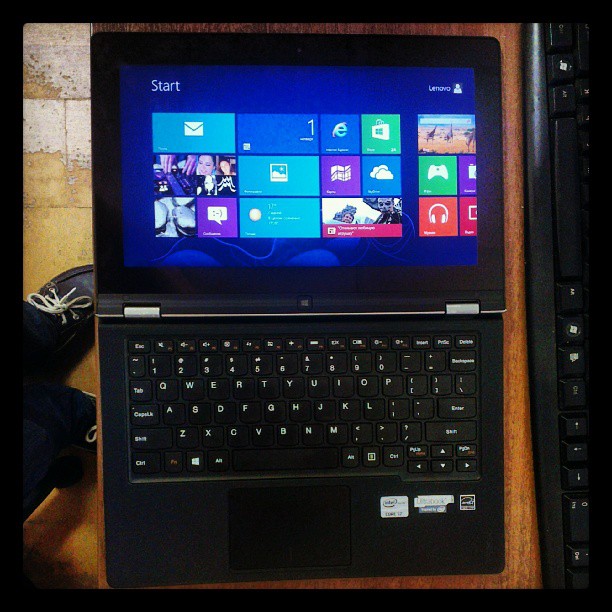
One of the latest gadgets in the line - Yoga 900, it was presented in October 2015. Lenovo has fixed the problem of overheating and increased the time to work on one battery charge to 10 hours. The older model is built on Intel Core i7 Skylake 2.5 GHz, has 16 gigabytes of RAM and 256 gigabytes of SSD. The screen is 13.3-inch with a resolution of 3200x1800, thickness - 14.9 mm. Ultrabook weighs 1.3 kilograms.
Laptops of this line are characterized by mobility, ease, powerful processors from Intel and a stylish design. And a very high cost.

The line of Yoga includes tablets. In October 2014 in London, the company introduced the Yoga Tablet 2 Pro with a 13.3-inch display with a resolution of 2560x1440 pixels, a projector and a battery for 18 hours of operation. The tablet was created with the participation of Ashton Kutcher (he is not just a person in advertising campaigns, but an active member of the development team - and this is not a joke). The tablet seems large, like a TV, has a hole in the stand under the hook, and weighs less than a kilogram. A hole under the hook is needed in order to watch TV shows in the kitchen. Of the minuses - the lack of flash.
Unfortunately, Lenovo refused to manufacture new tablets of this size, and now there are only 10.1-inch and 8-inch gadgets on sale. But the projector in the new devices moved from the end to the stand, which makes them in this regard much more convenient. Although nothing will replace the huge 13.3-inch screen.

In 2010, Lenovo introduced its first Android-smartphone - LePhone with a 3.7-inch screen of 800x480 pixels, a Qualcomm Snapdragon 1 GHz processor, 8 gigabytes of internal memory. It was possible to connect a QWERTY-keyboard, speakers and a removable battery to the device.
Lenovo in 2012 planned to spend $ 800 million on the development of mobile devices. At that time, the company was already the second largest producer of personal computers and laptops in the world, and in sales of tablets - the second in China. In the first three months of 2012, Lenovo sold 6.5 million smartphones and 0.4 million tablets.

In May 2012, Lenovo showed a smartphone with an Intel Atom 1.6 GHz processor - Lenovo LePhone K800. It had a 4.5-inch screen (still large), 1 GB of RAM, and 16 GB of internal memory. Cameras - 8 megapixel and 1.3 megapixel.

In October 2014, sales of Lenovo Vibe Z2 Pro began in Russia - the 6-inch flagship of the Vibe line. It was one of the world's first smartphones with a Quad HD resolution - 2560x1440 and with three gigabytes of RAM.
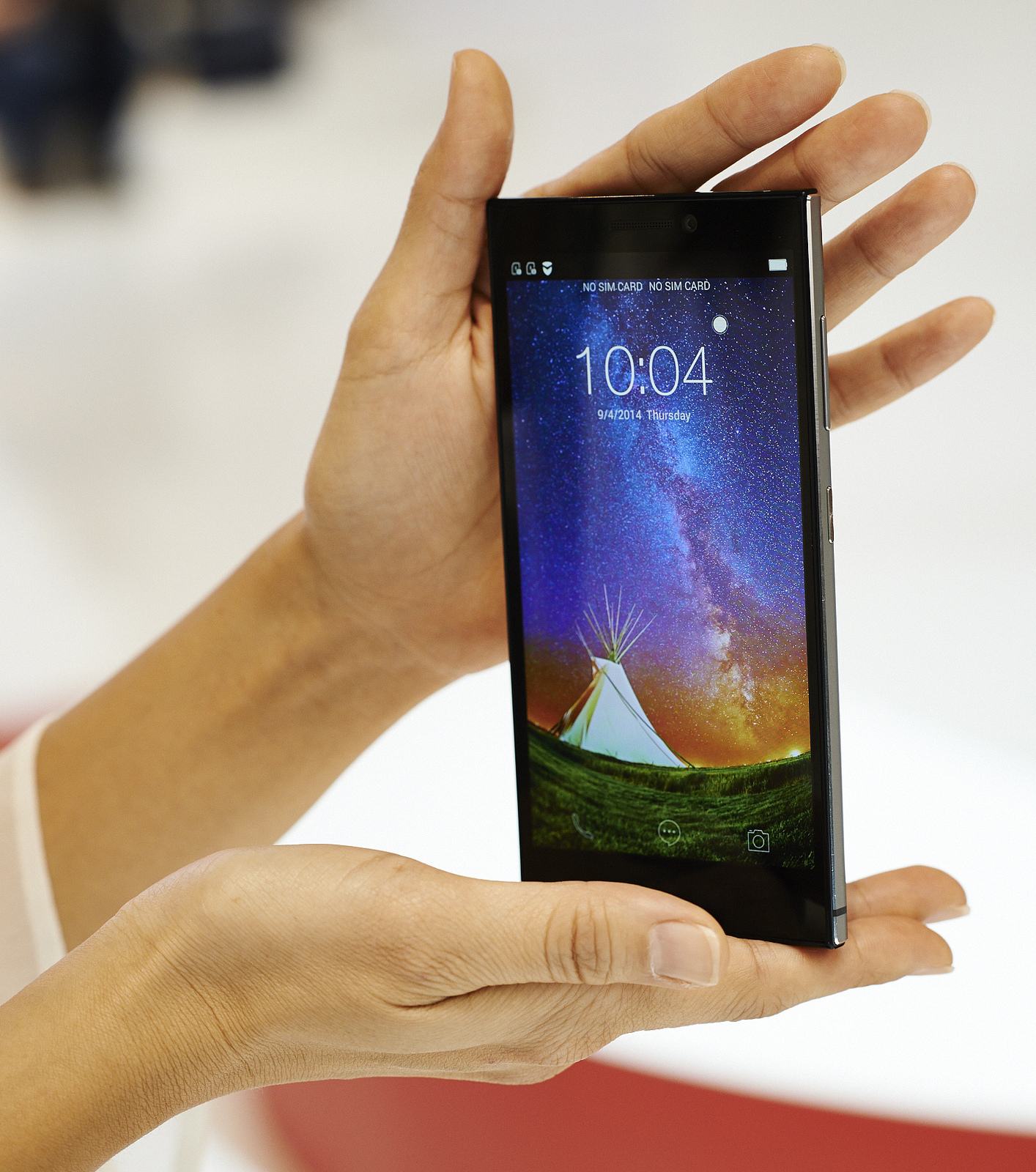
Then the Vibe X2 sandwich appeared. The smartphone has got quite good technical characteristics. He has two cameras - front 5 megapixel and the main 13 megapixel. Built-in memory in it - 32 GB, operational - 2 GB, IPS-screen 5 inches with a resolution of 1920x1080 pixels. The only negative was the battery at 2100 mAh. Interestingly, the smartphone was built on the first truly eight-core processor, in which all the cores work simultaneously - MediaTek MTK6595MBig.
But the most important was the design. In a world where rectangular black and white smartphones differ only in iron, the Vibe X2 has a three-color three-layer case. The use of several layers makes it possible in theory to create various variations, but only one of them initially reached Russia - it is in the middle of the image below. For the Vibe X2 at IFA 2014, Lenovo won the Best Leader on Android award.



Now in the line of Vibe there are several completely different phones:

Lenovo is working closely with Dolby . The Dolby Atmos system for movie theaters stores sound in the form of virtual sources or sound objects, which can be up to 128, with coordinates for each of them given in three-dimensional space. The mobile version of this system allows you to play three-dimensional sound in headphones using psychoacoustics techniques.
The first smartphone with Dolby Atmos Mobile was the A7000. Then Lenovo Phab Plus and other gadgets from Lenovo received support for this sound system.
The first devices of the Phab line were presented in Berlin in the fall of 2015, before IFA 2015. The Lenovo Phab Plus smartphone has a very large screen. And these are not empty words, as was the case with the HTC One X or other gadgets released a few years ago, the displays of which have now become the norm. Phab Plus has a screen of 6.8 inches. The device received an eight-core Qualcomm Snapdragon 615, 2 GB of RAM and 32 GB of internal memory, as well as a 3500 mAh battery. It is strange that the younger phone line, Lenovo Phab with a screen of 6.98 inches, has a more capacious battery - at 4250 mAh.
This screen phablet was due to the fact that people use a smartphone more often for content consumption, for watching videos or listening to music, than for calls. At the top and bottom of the Lenovo Phab Plus, the frame is very wide, and at first I had a question: why didn't they put the control buttons in the bottom frame? The answer turned out to be the following: because in this case it would be inconvenient to hold the device horizontally, users would press these buttons.
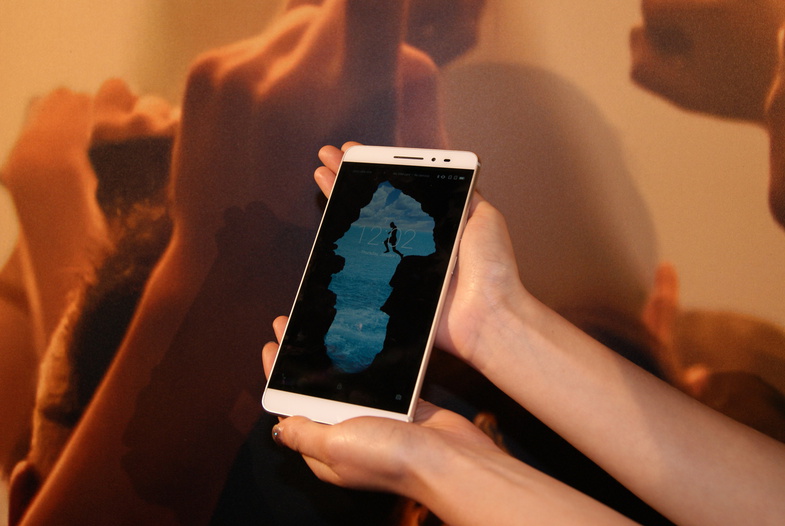

In early 2014, Google announced it would sell Lenovo’s Motorola Mobility division for $ 2.91 billion, along with 2,000 patents. Lenovo received a popular and very well-known trademark, after which it shortened its name to Moto and made it the name of its new line of smartphones. And returned the brand to Russia in March 2016.
Top Moto smartphone in Russia - X Force with unbreakable pOLED-screen with a resolution of 1440x2560, built on a Qualcomm Snapdragon 810 2 GHz processor, with 3 GB of operational and 32 GB of permanent memory and a 3760 mAh battery.
Geektimes users pay attention to the fact that Moto smartphones in Russia are very expensive, for example 16990 rubles cost the most budget model with 1 gigabyte of RAM and 8 gigabytes of internal memory, and the top one will cost 49990.
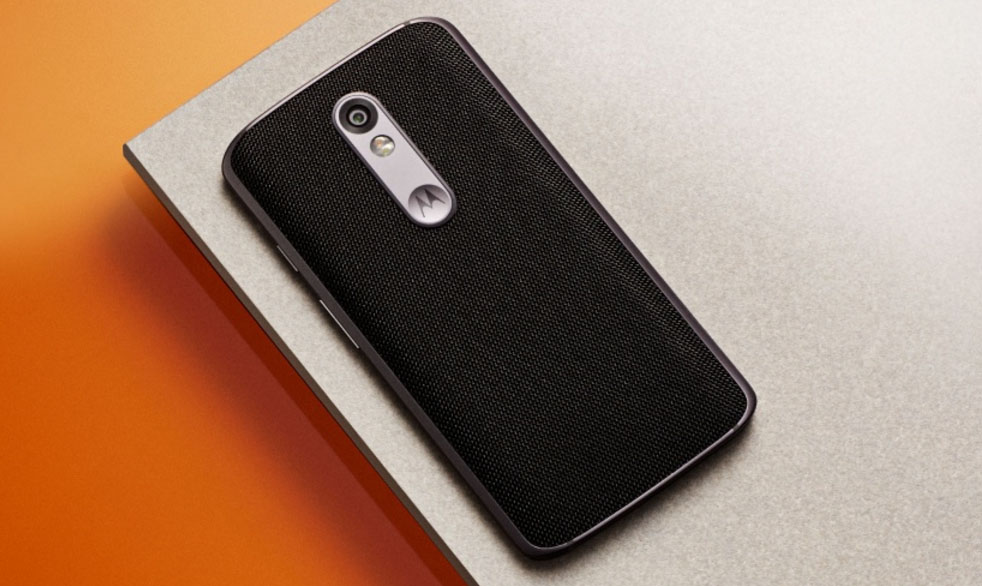
The first version of the Moto 360 smart watch appeared in 2014, it was presented at the IFA. By tradition, the second generation watches are also shown at IFA 2015 in Berlin. The new version has a convenient latch for replacing the straps and two display gauges - 42 and 46 mm, and in the 42-mm version there are two options for the width of the straps, for women and men. The screen is protected by Gorilla Glass 3.
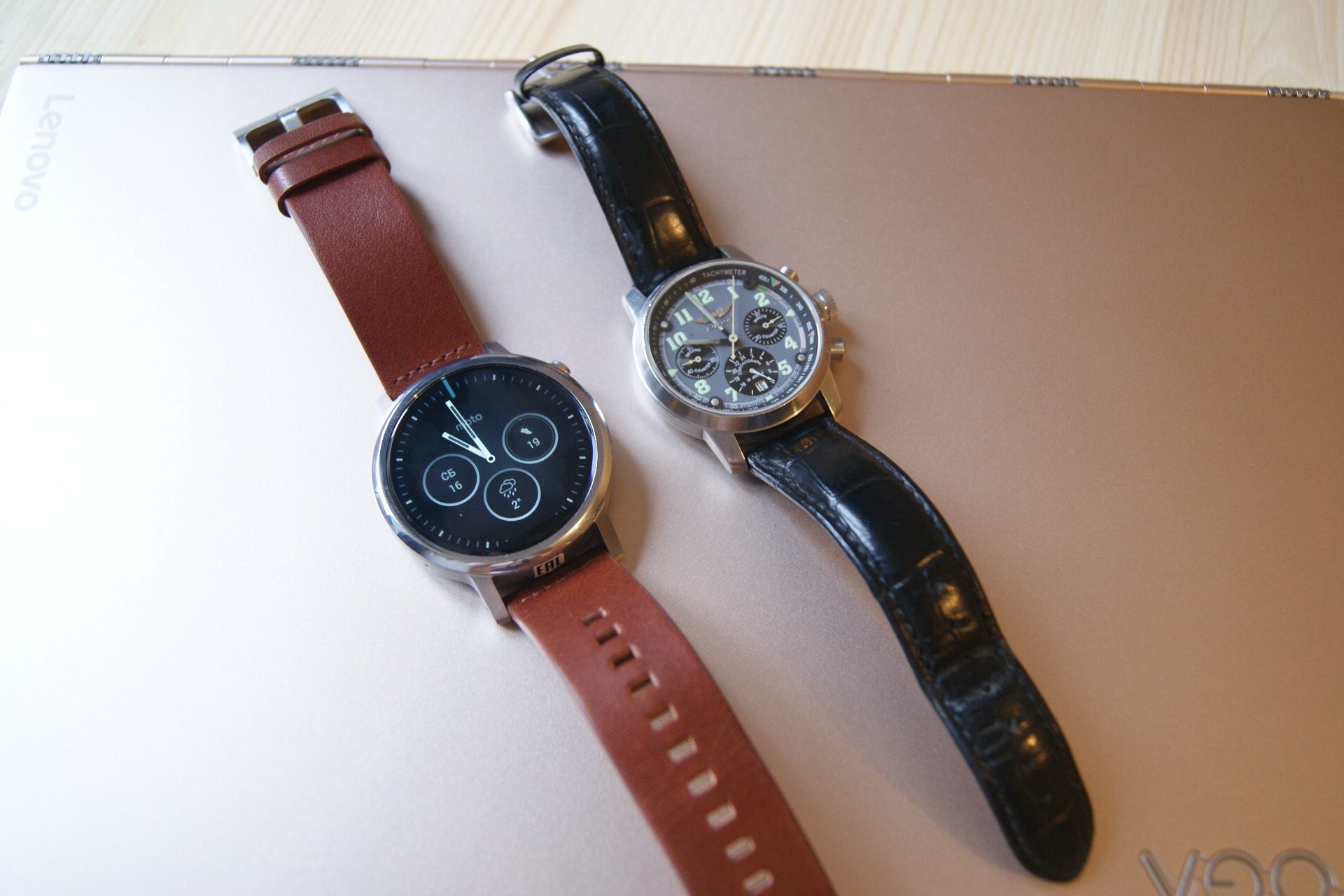
And let's hope that Lenovo will revive the Moto RAZR clamshell, the flagship of 2004. Someone on Geektimes is waiting for this.
Lenovo according to Gartner today is the world's largest supplier of personal computers, including laptops and premium ultrabooks. In the first quarter of 2016, the company occupied 19.3% of this market, shipping twelve and a half million devices. A huge role in this was played by the absorption of IBM's computer business, close work with Intel, successful experiments with form factors and corporate orders.
In Russia, Lenovo occupies 23% of the PC market according to IDC as of May 2016.

After buying the business of x86-servers from the same IBM for 2.3 billion dollars, Lenovo overtook Cisco sales and took the 4th place.
With the mobile business on a global scale, the situation worsened somewhat in 2016. If in the fourth quarter of 2015, the company ranked 4th in the list of vendors, then the Chinese Oppo and Vivo in the first quarter of 2016 removed Lenovo and Xiaomi from the top five. According to Euroset, in Russia, Lenovo ranks third in smartphone sales in the first five months of 2016.
The company is one of the five largest manufacturers of tablets and occupies 5.5% of this market according to the data for the first quarter of 2016.

The company owes much of its success to experiments - not always successful, of course. At IFA 2015 in Berlin, we were shown a smart watch for hidden video viewing - you need to face the special eye at the bottom of the dial. In the same place - phone with the projected keyboard. These gadgets have not yet entered the series, and it is not known whether this will happen.


In June 2016, the company introduced a flexible smartphone and tablet.
On sale should appear modular Moto phones. Although the question of modularity is a controversial issue here - it will just be possible for them to buy modules installed on the back cover.

And, of course, I must say about Project Tango - technology, which Google has long been engaged in. Will it be convenient to keep the tablet in front of you when walking around the museum or down the street to work with augmented reality? Time will tell.

New Technology Developer Incorporated
In 1984, a group of ten Chinese scientists founded New Technology Developer Incorporated for the money of the Chinese Academy of Sciences. The purpose of the organization was the supply of computer equipment to China, as well as the implementation on the market of developments of the Academy. The company's first product was a circuit board, which allowed IBM-compatible computers to work with Chinese characters.
At the very beginning there was an attempt to import TV sets into China, but the plan failed. In 1989, the company, already renamed Legend Group, released the first personal computer under its name - Legend Q286. In 1993, the company released the first personal computer in China based on the 586th Pentium processor, and in 1996, the first laptop. By 1998, Legend sold its millionth computer.
')

Legend DeepComp 1800
In 2002, the Legend DeepComp 1800 supercomputer with a capacity of 1000 Gflop / s in ranked 43rd on the list of the fastest computers. It was the first supercomputer from the company and the most powerful of the Chinese on the Top 500 list at that time. It was equipped with 526 Intel Xeon processors, 272 gigabytes of RAM and 6 terabytes of hard drives. DeepComp 1800 was installed at the Institute of Mathematics and Systems Research of the Chinese Academy of Sciences in Beijing.
As of November 2015, Lenovo, which has swallowed IBM x86 server business, ranks 25 lines in the Top-500 supercomputers. The company is part of the Gartner Magic Quadrant of integrated system manufacturers.

Thinkpad
For expansion to the international market, Lenovo decided to find a ready-made brand, to which future buyers will have respect and trust. They became a ThinkPad.

In 1992, IBM released the first ThinkPad notebook. Model 300 had 4 megabytes of RAM with the ability to increase to 8 megabytes, a hard disk of 80 megabytes and a 9.5-inch display with a resolution of 640x480 pixels. And there was no red trackpoint in it - it appeared on the 700C model that same year. The 700C already had up to 16 megabytes of RAM and a 120 MB hard drive.
The following year, the IBM ThinkPad 750C went into space through the purchase of NASA.


In 1995, the first transformer ThinkPad. The IBM ThinkPad 701 had a butterfly keyboard - it unfolded when the laptop was opened.

The transformation baton was picked up by the ThinkPad 570 in 1999. This laptop has got a docking station with a CD-drive. It ran on an Intel Pentium II MMX 366Mhz processor, ranged from 32 to 192 megabytes of RAM, a 6.4 gigabyte hard drive, and weighed 1.83 kilograms. The device screen is a 13.3-inch TFT with a resolution of 1024x768.

In 2004, IBM and Lenovo began working on a collaboration agreement. In 2005, Lenovo completed the acquisition of IBM's PC manufacturing division and became a new player in the international IT market and the third largest PC manufacturing company in the world. The cost of the transaction amounted to 1.25 billion dollars, and according to its conditions, Lenovo could continue to use the IBM brand until 2010, and then release products only under its own brand.
By 2012, Lenovo won the first place in the supply of personal computers through the purchase of computer business by IBM and the German company Medion.
Lenovo continues the tradition of developing transformers in Yoga models. In 2006, the company released the IBM Lenovo ThinkPad X41 with a touch screen and the ability to turn into a tablet.

The Lenovo ThinkPad notebook line is distinguished by its red trackpoint, angular body and reliability. This line is often chosen by corporate customers - from NASA to stores, warehouses and factories. The trackpoint in the middle of the keyboard turned out to be so convenient that the company even produces separate “à la Thinkpad” keyboards .
Lenovo launches models at the intersection of ThinkPad and Yoga. For example, Yoga ThinkPad 260 - I described the experimental silver model in a report from IFA 2015. ThinkPad Yoga laptops are made in the style of a ThinkPad, so their screen rotates 360 degrees, turning the device into a tablet.

Some people think that the ThinkPad is no longer a cake. Lenovo has made a number of changes that affect the design and keyboard. New laptops, for example, have a small island keyboard instead of the seven-line classic, have no ThinkLight backlight. Some users do not like the materials.
To correct this opinion, the vice-president of the company decided to make a “retro-ThinkPad”, which we discussed . Your opinion reached the company itself, but so far the results of this work have not shown us. We will wait and hope for the revival of the classic device.
Lenovo Yoga
Transformer laptops have existed for a long time, but Lenovo has made this form factor especially popular thanks to the Yoga line. Now touchscreen laptops are produced by many major manufacturers.
In 2012, the company released Yoga 11 - a transformer on the Nvidia Tegra 3 1.3, with 2 GB of RAM and 32 or 64 GB SSD. More like the characteristics of a smartphone, right? The downside of the gadget was Windows RT, but this flaw was corrected in the following models.

A great tool for the job I still think is the Yoga 11S released in 2013 on Windows 8 Pro, built on the basis of Intel Core i7 1500 MHz and having 8 GB of RAM and SSD up to 256 GB. The display is 11.6 inches with HD resolution at the same time more than a regular tablet, and less than a large laptop - the gadget is convenient for traveling and working on the go, for example, for writing articles from events. But there is also a minus - for the tablet gadget is heavy.

One of the latest gadgets in the line - Yoga 900, it was presented in October 2015. Lenovo has fixed the problem of overheating and increased the time to work on one battery charge to 10 hours. The older model is built on Intel Core i7 Skylake 2.5 GHz, has 16 gigabytes of RAM and 256 gigabytes of SSD. The screen is 13.3-inch with a resolution of 3200x1800, thickness - 14.9 mm. Ultrabook weighs 1.3 kilograms.
Laptops of this line are characterized by mobility, ease, powerful processors from Intel and a stylish design. And a very high cost.

The line of Yoga includes tablets. In October 2014 in London, the company introduced the Yoga Tablet 2 Pro with a 13.3-inch display with a resolution of 2560x1440 pixels, a projector and a battery for 18 hours of operation. The tablet was created with the participation of Ashton Kutcher (he is not just a person in advertising campaigns, but an active member of the development team - and this is not a joke). The tablet seems large, like a TV, has a hole in the stand under the hook, and weighs less than a kilogram. A hole under the hook is needed in order to watch TV shows in the kitchen. Of the minuses - the lack of flash.
Unfortunately, Lenovo refused to manufacture new tablets of this size, and now there are only 10.1-inch and 8-inch gadgets on sale. But the projector in the new devices moved from the end to the stand, which makes them in this regard much more convenient. Although nothing will replace the huge 13.3-inch screen.

Mobile business
In 2010, Lenovo introduced its first Android-smartphone - LePhone with a 3.7-inch screen of 800x480 pixels, a Qualcomm Snapdragon 1 GHz processor, 8 gigabytes of internal memory. It was possible to connect a QWERTY-keyboard, speakers and a removable battery to the device.
Lenovo in 2012 planned to spend $ 800 million on the development of mobile devices. At that time, the company was already the second largest producer of personal computers and laptops in the world, and in sales of tablets - the second in China. In the first three months of 2012, Lenovo sold 6.5 million smartphones and 0.4 million tablets.

In May 2012, Lenovo showed a smartphone with an Intel Atom 1.6 GHz processor - Lenovo LePhone K800. It had a 4.5-inch screen (still large), 1 GB of RAM, and 16 GB of internal memory. Cameras - 8 megapixel and 1.3 megapixel.

In October 2014, sales of Lenovo Vibe Z2 Pro began in Russia - the 6-inch flagship of the Vibe line. It was one of the world's first smartphones with a Quad HD resolution - 2560x1440 and with three gigabytes of RAM.

Then the Vibe X2 sandwich appeared. The smartphone has got quite good technical characteristics. He has two cameras - front 5 megapixel and the main 13 megapixel. Built-in memory in it - 32 GB, operational - 2 GB, IPS-screen 5 inches with a resolution of 1920x1080 pixels. The only negative was the battery at 2100 mAh. Interestingly, the smartphone was built on the first truly eight-core processor, in which all the cores work simultaneously - MediaTek MTK6595MBig.
But the most important was the design. In a world where rectangular black and white smartphones differ only in iron, the Vibe X2 has a three-color three-layer case. The use of several layers makes it possible in theory to create various variations, but only one of them initially reached Russia - it is in the middle of the image below. For the Vibe X2 at IFA 2014, Lenovo won the Best Leader on Android award.



Now in the line of Vibe there are several completely different phones:
- Using your Vibe P1 smartphone with a 5000 mAh battery, you can charge your other gadgets.
- The Lenovo Vibe Shot is a camera phone with a 16-megapixel camera, an infrared autofocus, a six-component high-definition lens and an optical image stabilizer. For selfies there is an 8 megapixel camera.
- The Vibe X3 smartphone has an aluminum case, support for Dolby Atmos and a 21 megapixel camera with 4K video recording capability, as well as a fingerprint scanner. To record the sound technology is used Wolfson Audio, working simultaneously with three microphones for filtering noise. But the design of the Vibe X2 smartphone is lost.

Lenovo is working closely with Dolby . The Dolby Atmos system for movie theaters stores sound in the form of virtual sources or sound objects, which can be up to 128, with coordinates for each of them given in three-dimensional space. The mobile version of this system allows you to play three-dimensional sound in headphones using psychoacoustics techniques.
The first smartphone with Dolby Atmos Mobile was the A7000. Then Lenovo Phab Plus and other gadgets from Lenovo received support for this sound system.
The first devices of the Phab line were presented in Berlin in the fall of 2015, before IFA 2015. The Lenovo Phab Plus smartphone has a very large screen. And these are not empty words, as was the case with the HTC One X or other gadgets released a few years ago, the displays of which have now become the norm. Phab Plus has a screen of 6.8 inches. The device received an eight-core Qualcomm Snapdragon 615, 2 GB of RAM and 32 GB of internal memory, as well as a 3500 mAh battery. It is strange that the younger phone line, Lenovo Phab with a screen of 6.98 inches, has a more capacious battery - at 4250 mAh.
This screen phablet was due to the fact that people use a smartphone more often for content consumption, for watching videos or listening to music, than for calls. At the top and bottom of the Lenovo Phab Plus, the frame is very wide, and at first I had a question: why didn't they put the control buttons in the bottom frame? The answer turned out to be the following: because in this case it would be inconvenient to hold the device horizontally, users would press these buttons.


In early 2014, Google announced it would sell Lenovo’s Motorola Mobility division for $ 2.91 billion, along with 2,000 patents. Lenovo received a popular and very well-known trademark, after which it shortened its name to Moto and made it the name of its new line of smartphones. And returned the brand to Russia in March 2016.
Top Moto smartphone in Russia - X Force with unbreakable pOLED-screen with a resolution of 1440x2560, built on a Qualcomm Snapdragon 810 2 GHz processor, with 3 GB of operational and 32 GB of permanent memory and a 3760 mAh battery.
Geektimes users pay attention to the fact that Moto smartphones in Russia are very expensive, for example 16990 rubles cost the most budget model with 1 gigabyte of RAM and 8 gigabytes of internal memory, and the top one will cost 49990.

The first version of the Moto 360 smart watch appeared in 2014, it was presented at the IFA. By tradition, the second generation watches are also shown at IFA 2015 in Berlin. The new version has a convenient latch for replacing the straps and two display gauges - 42 and 46 mm, and in the 42-mm version there are two options for the width of the straps, for women and men. The screen is protected by Gorilla Glass 3.
And let's hope that Lenovo will revive the Moto RAZR clamshell, the flagship of 2004. Someone on Geektimes is waiting for this.
Lenovo today
Lenovo according to Gartner today is the world's largest supplier of personal computers, including laptops and premium ultrabooks. In the first quarter of 2016, the company occupied 19.3% of this market, shipping twelve and a half million devices. A huge role in this was played by the absorption of IBM's computer business, close work with Intel, successful experiments with form factors and corporate orders.
In Russia, Lenovo occupies 23% of the PC market according to IDC as of May 2016.

After buying the business of x86-servers from the same IBM for 2.3 billion dollars, Lenovo overtook Cisco sales and took the 4th place.
With the mobile business on a global scale, the situation worsened somewhat in 2016. If in the fourth quarter of 2015, the company ranked 4th in the list of vendors, then the Chinese Oppo and Vivo in the first quarter of 2016 removed Lenovo and Xiaomi from the top five. According to Euroset, in Russia, Lenovo ranks third in smartphone sales in the first five months of 2016.
The company is one of the five largest manufacturers of tablets and occupies 5.5% of this market according to the data for the first quarter of 2016.

The company owes much of its success to experiments - not always successful, of course. At IFA 2015 in Berlin, we were shown a smart watch for hidden video viewing - you need to face the special eye at the bottom of the dial. In the same place - phone with the projected keyboard. These gadgets have not yet entered the series, and it is not known whether this will happen.


In June 2016, the company introduced a flexible smartphone and tablet.
On sale should appear modular Moto phones. Although the question of modularity is a controversial issue here - it will just be possible for them to buy modules installed on the back cover.

And, of course, I must say about Project Tango - technology, which Google has long been engaged in. Will it be convenient to keep the tablet in front of you when walking around the museum or down the street to work with augmented reality? Time will tell.

Source: https://habr.com/ru/post/395231/
All Articles